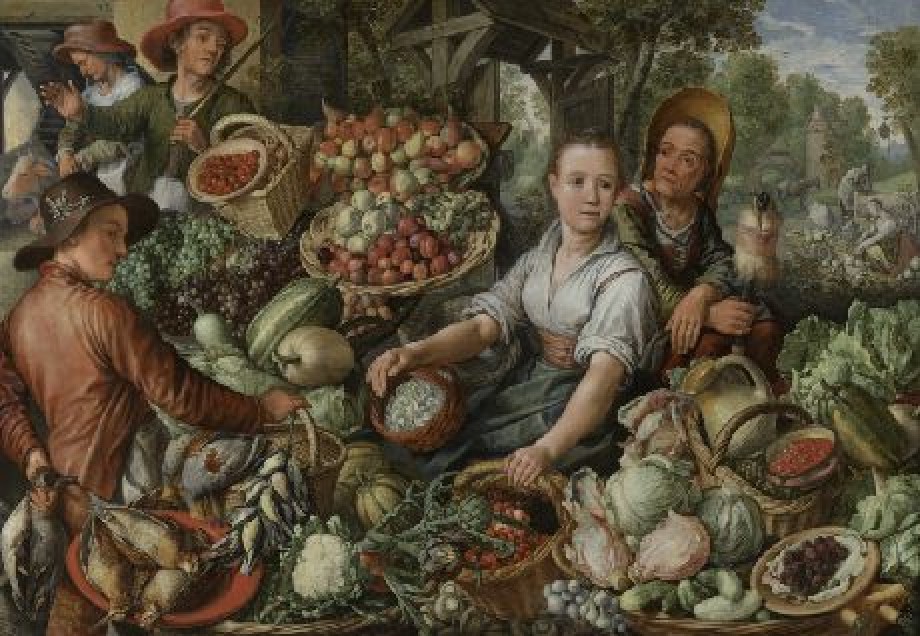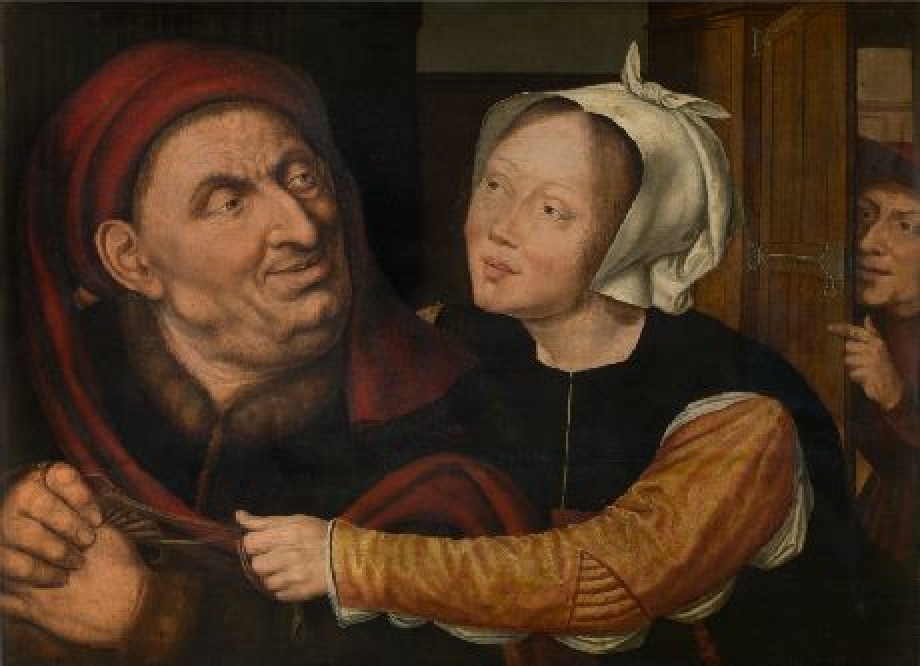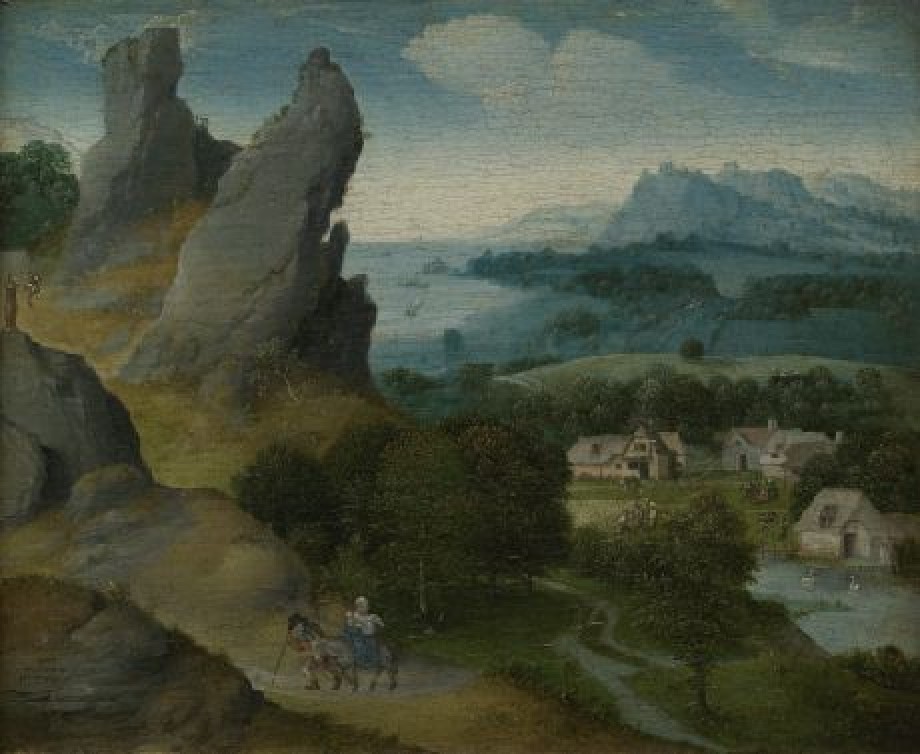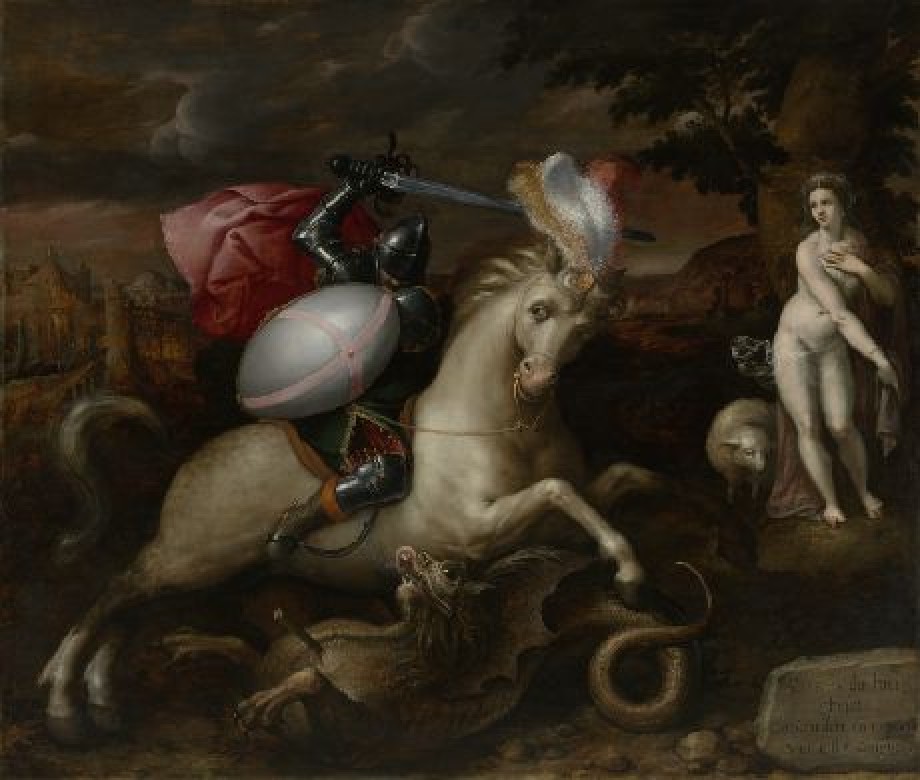Brothel Scene

Artist / maker
Joachim Beuckelaer (painter)Date
1563Period
16th centuryCollection
Royal Museum of Fine Arts Antwerp
People who are obviously drunk have gathered around a table and are behaving very badly indeed. The man is fondling two women, and a third woman is staring so deep into her tankard that she is forgetting to feed her child. The male customer is a better class of person. He is more smartly dressed, and is drinking wine poured…
Read more
People who are obviously drunk have gathered around a table and are behaving very badly indeed. The man is fondling two women, and a third woman is staring so deep into her tankard that she is forgetting to feed her child. The male customer is a better class of person. He is more smartly dressed, and is drinking wine poured into his glass from a pewter flagon. The women, on the other hand, are simply dressed and are drinking beer from earthenware jugs. The kitchenmaid on the left is hard at work, and seems detached from the goings-on around the table. She is looking out at the viewer with a dubious look on her face. At the very back there is an old man taking his ease by a fire in the hearth. A third man is just emerging from the room at the back.
He is the one who identifies the setting as a brothel and not a kitchen or inn as art historians used to think. That is because Beuckelaer had previously painted a similar composition (Walters Art Museum, inv. no. 37.1784) which makes it abundantly clear what is going on at the back. A man in the room has his trousers around his ankles, and there is a woman lying on a bed. The Antwerp brothel scene is a bowdlerised version of the subject. Beuckelaer actually based both variants on brothel scenes by the artist known as the Braunschweig Monogrammist. The explicit precedent (KMSKA, inv. no. 875) shows a man drinking and a woman stepping out of bed. In the cleaned-up version (London, National Gallery, inv. no. 5577) a fully dressed couple are entering the front room. It emerges from the underdrawing that Beuckelaer originally wanted to follow the London version closely, for at first he drew two figures standing in the doorway.
The birdcage in the Antwerp picture may be an allusion to the activities in the brothel, for ‘vogelen’ (birding) was a slang term for fornication in 16th and 17th-century Dutch. In addition, the cage is placed pointedly by the back room, both here and in the painting by the Braunschweig Monogrammist. Some have spotted more allusions of this kind in the work. The parsnips and courgettes in the foreground have been considered phallic symbols, and the act of impaling the chicken on the spit was taken as a metaphor for sexual penetration. Other saw the figures as personifications of vices. The old man at the back supposedly represented Idleness (Acedia) and the man at the front Lust (Luxuria).
Such symbols add an extra layer of meaning, but they are not essential to understand what is taking place here. Beuckelaer gave free rein to his sense of humour when illustrating man’s baser instincts. And he also associated them with a specific social class. The building depicted in this picture, a simple setting for a display of loose morals, differed radically from the rich burgher homes in which the painting would hang. His public recognised the location as a brothel, despite the prettified version of the back room, and interpreted the figures’ behaviour as scandalous.
Contemporaries often praised Beuckelaer’s work for its realism, so the many details give us a genuine glimpse into the 16th century. The pewter flagons, glass and earthenware look astonishingly like the archeological finds from Beuckelaer’s day. The windows and tiles can still be seen in 16th-century buildings. There is nothing with which we could compare the costumes, for the simple reason that most articles of clothing from those days have been lost, but costume historians assume that Beuckelaer depicted them correctly. At the same time, though, a painting is always a reconstruction; Beuckelaer did not simply paint what he saw. That is very well illustrated by the mantelpiece at the back of the room. Beuckelaer based it on a print of a ‘Doric hearth’ in the book of architecture by Sebastiano Serlio, which was translated in Antwerp by the artist Pieter Coecke van Aelst. Beuckelaer often used it as a source of inspiration, while many of the designs were never built in Antwerp.
The painting was recently restored, bringing the original colours to light again. The underdrawing shows through the thin paint layers here and there. Various alterations can be seen with the naked eye. The head of the woman on the left, for instance, stood further to the right. There are also differences in the underdrawing technique. Some areas are very free and loose, whereas others, such as the jar on the right, were worked up with the aid of axial lines.
Read less











